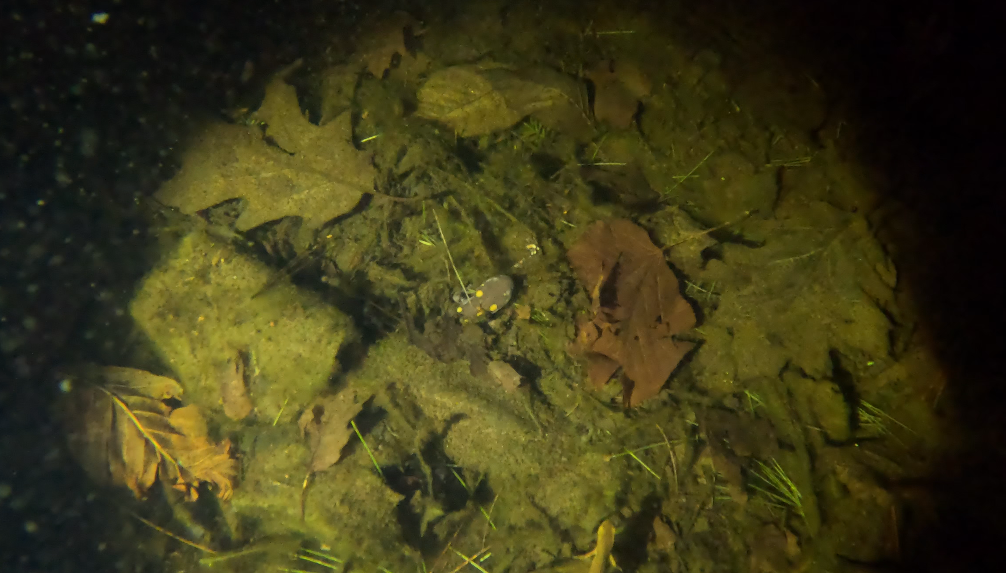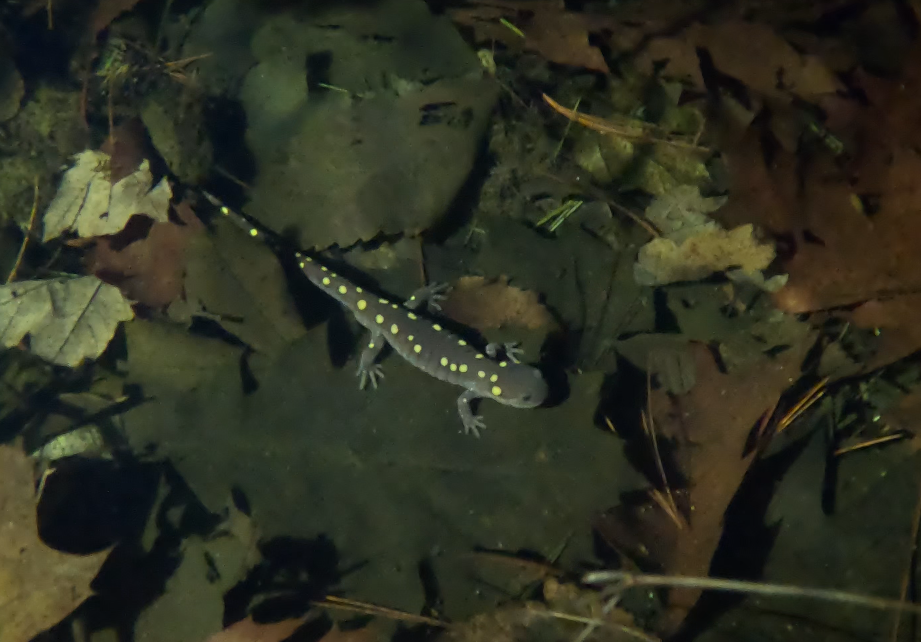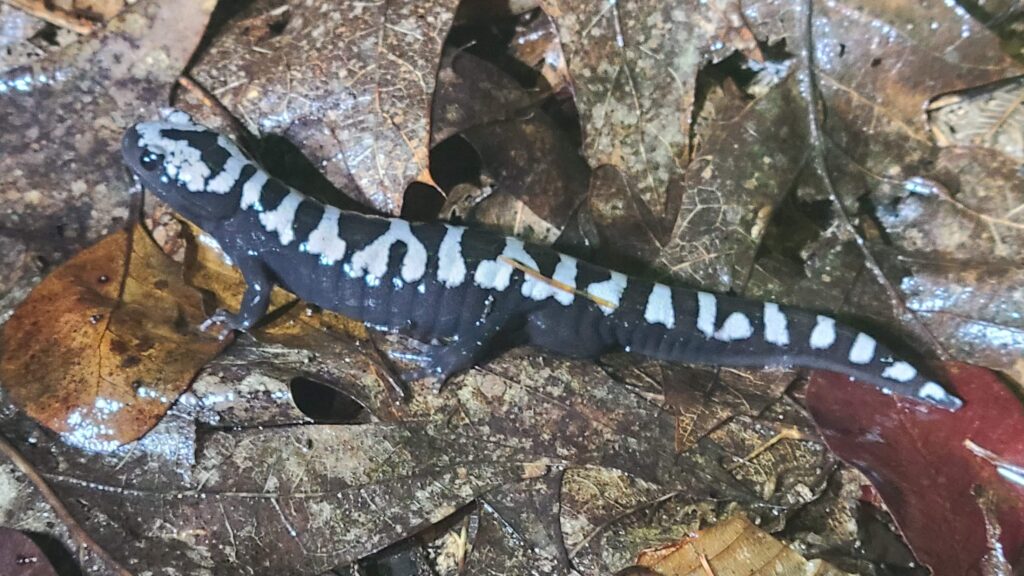Picture this: it’s around 10pm on a chilly March evening, and we’re all hip-deep in vernal pool water. With a flashlight in hand, you crouch over, slowly walking through sections of the pool, intently observing any wildlife you can illuminate in the otherwise dark water. You spot twirling, vibrant creatures no larger than the tip of your pinky finger. They swim together in crowds, and you count 20, no 30, maybe even 50 following your stream of light.
These back-swimming beauties are fairy shrimp, dancing about the vernal pool with 11 pairs of legs that also serve as their gills. You look closer and notice that some of the fairy shrimp carry additional pouches full of eggs. You watch the majestic crowds dance in your spotlight while a symphony of peeps fills your ears, spring peepers. These tiny frogs, named for their mating call, “peep, peep, peep,” flock to the wetlands at the first sign of spring to sing their chorus. You are most consumed by the ensemble when suddenly, something deeper in the pool shifts, drawing your attention away from the captivating fairy shrimp and choir of spring peepers. You steady your eyes on a pair of shuffling leaves.

After long minutes of staring, the culprit of the shuffling finally emerges, first squirming slowly, then zipping about. You watch it wriggle and slide through the pool with ease, flashes of yellow keeping your attention drawn to the next pile of leaves it slinks beneath. The spotted salamander peeks its head out, as if checking the coast is clear, before gliding off into the murk of the pool.

These discrete amphibians migrate to vernal pools on warm and rainy early spring evenings to breed and lay their gelatinous eggs. The vernal pools offer a sanctuary for amphibians like these to lay their hundreds of eggs, as predatory fish cannot inhabit these pools due to their characteristic dry period. After this brief breeding period, the spotted salamanders return to the woodlands where they hide under rocks, logs, and leaf debris. Spotting them here in the vernal pool is a significant event. Suddenly, from across the pool, your colleague hollers out, “We’ve got one!”
Careful not to trudge too quickly and muddy the clarity of the pool, you hastily make your way over to see what’s been found. You see a small, polliwog-like organism with a sleek, streamlined body, using its tail to dart through the water in a wave-like fashion. Yet this creature is not a polliwog; it wears what could be mistaken for a fancy headdress, external gills. This fragile life is a young salamander, specifically a rare and state-protected species: the marbled salamander. This is exactly the species biologists in New England are out searching for on these chilly March nights.

Uniquely, the marbled salamander lays its eggs when the vernal pool is dried up in late summer or early fall. After laying, the females wrap their bodies around the eggs, guarding them until the autumn rainfall fills the pool and submerges the eggs, initiating their hatch. The hatchling salamanders emerge into the newly filled vernal pools just as temperatures drop for the harsh New England winter. These half-inch young continue their development under the ice, giving them an advantage in the vernal pool food web when early spring arrives and other amphibians are just beginning their egg-laying process. Observations like these are essential to the species’ conservation.

Since 2008, a decline in salamander productivity has been evident across New England, and with many populations being small or isolated, more frequent poor breeding years could push them towards extinction. With climate change, the Northeast is seeing wetter summers and falls, but drier winters and springs. This change in weather patterns is bad news for marbled salamanders. Their breeding habitats are at risk because wetlands might fill up with water too early, leaving females with fewer places to lay eggs. Drier winters and springs are also problematic. Less water in the spring means more competition among larvae, slowing their growth. If wetlands dry up too soon, salamander larvae might die before they can fully develop.
These effervescent evenings in early spring are an integral part of our work to conserve native wildlife populations, like the marbled salamander, and local habitats like the vernal pools.
